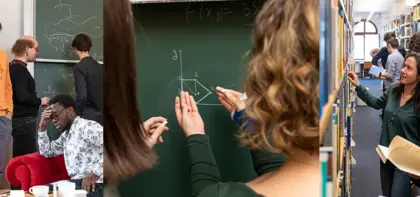
Scientific Members working in this area
/
Current PhD Students
Alumni
The graduates are organized alphabetically by last name. To make navigation easier for you, you can either select the initial letter directly or use the year selection to display all entries from a specific year. Additionally, you will find the title, advisor, and graduation year here. If you would like more information about a particular work, simply click on the title of the thesis.
B
Baldus, Michael
Buckmaster, Tristan
C
Carioni, Marcello
Chan, Raymond
D
Dolgov, Sergey
Döring, Lukas
Dowerk, Philip
E
Elkasapy, Abdelrhman Ibrahim Mohamed
Espejo Arenas, Elio Eduardo
Esselborn, Elias
F
Förster, Clemens
G
Giunti, Arianna
Gnann, Manuel
H
Huber, Alexander
K
Kachanovska, Maryna
Karmakar, Biswajit
Kübel, Andreas
Kunick, Florian
L
Lauteri, Gianluca
Laux, Tim Bastian
Linares, Pablo
Logaritsch, Philippe
M
Makita, Percy
Mukherjee, Chiranjib
N
Neuß, Marius
Nobili, Camilla
R
Raithel, Claudia
S
Schlichting, André
Schnurr, Michael
Seydel, Roland C.
Simon, Thilo Martin
T
Taggi, Lorenzo
Tempelmayr, Markus
W
Wagner, Christian
Wohlgemuth, Jens
X
Xu, Ling
Z